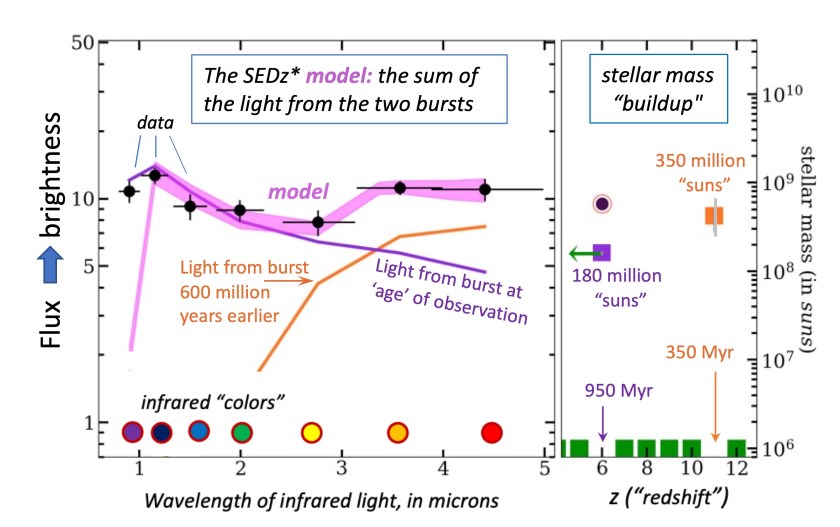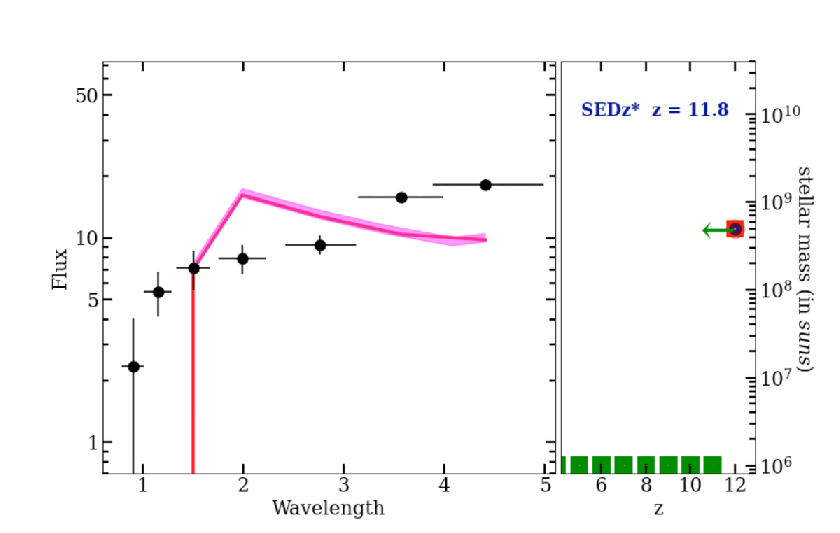NASA’s James Webb Space Telescope is delivering on its promise to explore the farthest reaches of the universe, looking back to a time when galaxies were just beginning to form. Scientists have been eagerly waiting to use this complex observatory to understand details that have been out of reach. We invite Alan Dressler, astronomer emeritus at the Carnegie Institute for Science Observatories, to describe his journey of scientific discovery from the early days of NASA’s Hubble Space Telescope to the exciting, new era of astronomy with the James Webb Space Telescope.
“In 1993 I was asked by AURA – the Associated Universities of Research in Astronomy – to lead a committee of 20 astronomers in identifying the important questions astronomers might answer in the next 20 years, given the astonishing and surprisingly deep view of the universe from the Hubble Space Telescope (HST). Astronomers had expected Hubble might be able to ‘look back in time’ to when the universe was half its present age of 13.8 billion years, or around 7 billion years ago. This by itself was an exciting prospect, but Hubble did far better, discovering that light from distant galaxies was brighter – and more intense – than expected. Our HST & Beyond committee realized that Hubble could take us to the threshold of the actual birth of galaxies, within the billion years after the big bang. This was a ‘once-in-a-species’ opportunity to witness our own cosmic origins.
“Without galaxies to host generations of stars and accumulate the heavy chemical elements that are essential ingredients in planets – and life – our universe would have fizzled. However, to actually see galaxy births would require something beyond Hubble: a bigger telescope, with extreme sensitivity to infrared light. The HST & Beyond committee advised NASA to build such a telescope – an extraordinary challenge, because only a super-cold telescope placed far from Earth could see the faint glow of these cosmic cradles. It took 25 years and nearly 20,000 smart, dedicated people, but the James Webb Space Telescope has done it! Since the start of science observations in July 2022, different programs use the telescope to take pictures of galaxies in the throes of birth, more than 13 billion years ago. And there has been a great surprise! Galaxies were born in explosive bursts of star formation – unlike anything that we have ever seen.
“I had hoped that I might share in this epic journey – so long in coming – and fortunately, I have. The team that built Webb’s NIRCam (Near-Infrared Camera), the telescope’s primary camera, has taken extremely deep pictures in nine infrared colors with its Guaranteed Time Observations program called JWST Advanced Deep Extragalactic Survey (JADES). JADES surveyed the southern portion of the Great Observatories Origins Deep Survey (GOODS), a region of the sky used to perform deep astronomical surveys. This GOODS-South field is wide enough to capture about 1,000 galaxies of the universe’s first billion years. This was the time when rapid expansion of the universe had cooled it enough for gravity to pull together hydrogen and helium gas, enabling the birth of the first stars. This first generation will be very hard to detect (and may be undetectable – even with Webb), but we are seeing the second-generation stars that did the ‘major lifting’ of chemical enrichment.

Credits: NASA, ESA, CSA, Brant Robertson (UC Santa Cruz), Ben Johnson (CfA), Sandro Tacchella (Cambridge), Marcia Rieke (University of Arizona), Daniel Eisenstein (CfA).
“Galaxies ‘grow’ by turning the (mostly hydrogen) gas into generations of stars – adding stellar mass. Today’s galaxies do this slowly – not much gas is left. However, astronomers suspected that, in the gas-rich early universe, growth would be rapid and dynamic, and that has turned out to be quite an understatement. As a population of stars ages, their combined light turns from blue to red: Astronomers have long struggled to distinguish a relatively young galaxy from a much older one, because a population of stars that is 2 billion years old is already just as ‘red’ as another galaxy that is 10 billion years old. This is like judging the age of people only from their height. But here is where things turn to our favor: The observatory is showing us galaxies from the first billion years – extremely young, where the light comes from stars about twice as massive, and much bluer, than our Sun. These so-called A-stars are fantastic ‘cosmic clocks,’ with lifetimes between 100 million years and 1 billion years. Over a billion years it’s easy to tell the youngest from the oldest. We use them to decode the histories of star formation of the first galaxies.
“These NIRCam pictures record the infrared colors of the combined light of these young stars. To understand the astrophysics, astronomers prefer to spread starlight into a highly detailed ‘rainbow,’ called a spectrum, with hundreds, or thousands, of colors in it. But the first galaxies are too faint for that, so instead we use a ‘simple rainbow’ of seven colors obtained from NIRCam images taken with different filters to analyze the age and history of each galaxy. Astronomers call this ‘simple rainbow’ the ‘spectral energy distribution or SED.
“Over several years l developed a computer code – SEDz* – that analyzes seven-color SEDs to extract a galaxy’s history of star formation. The figure below shows how the distinct SEDs of young stellar populations are used to measure star formation histories. The top left panel shows the SED (the data) of a faint galaxy and the model that SEDz* produces by combining the light of stellar populations that, added together, describe the galaxy’s history of star formation. The SEDz* solution includes measuring the redshift of the galaxy (the ‘when’) – the red-ward shift of light due to the expansion of the universe (why we look in the infrared to see these first galaxies). SEDz* solves for the combination of populations of stars – how much mass at what age? – best matches the data. For every well-observed galaxy, only one combination of stellar population ages – one star formation history – ‘works.’ In some cases, comparatively few stars – too few to detect – are born in the roughly 500 million years in-between, so we describe these as bursts of rapid and intense star formation – starbursts.

“The astonishing thing is that, together, such bursts are found for more than 70% of the roughly 900 galaxies in the sample. About half of all histories in this study are single bursts – meaning that all the stars combined, having 100 million up to 1 billion times the mass of our Sun, are born in a time of about 100 million years, and probably much less. There are no starbursts of this magnitude occurring in the modern universe, or even in the previous 10 billion years that led to our time. These early starbursts easily surpass any we’ve ever seen, and computer models of how galaxies were built did not predict them. The challenge for theorists will be to understand the physics that allow – actually ‘require’ – such violent events to kick things off.
“Below are two more examples, a single starburst, and an infant galaxy growing smoothly and steadily – more like what we expected for most of them. Such longer histories that spread over the first billion years are outnumbered three to one by the bursts, but each of these ‘steady builders’ accumulate considerable stellar mass, so they substantially contribute to building today’s population of galaxies, like our own Milky Way.


“The early universe of galaxies began in a fury of what might be called ‘explosive star formation,’ with only a modest fraction of galaxies growing in a slower, steadier pace. In the billion years that follow, these burst galaxies must grow about 10 times in stellar mass. That much we know. How they do it? That we surely don’t. And that’s the challenge.”
About the Author
Alan Dressler is a staff scientist emeritus at the Carnegie Institution for Science in Washington. He studies how galaxy structures and shapes change, the pace and character of star birth, and how large galaxies form from earlier, smaller systems. The findings in this blog were published in the March 27, 2024 issue of The Astrophysical Journal.
